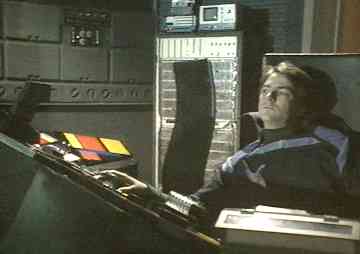
The people of Keezarn possessed a genetically engineered race memory, implanted before the collapse of their civilisation some 3,000 years previously. Every thirty five generations they became compelled to find someone who could open the vault door to the matter transmission terminal in the City at the Edge of the World. Norl spoke of "the need that grew in us until it blotted out all other needs". Previous generations had clearly found someone to open the door for them, since Vila and Kerril found the remains of two bodies on the starship to which they were transported. However, the ship had still been in flight on these occasions, and the hapless travellers had perished.
Champion of the Vandor Confederacy prior to the appearance of Vinni. Vinni killed Racov in a private challenge, and later Racov's son who issued his own challenge by right of blood feud.
Avon planned to enter the Altern system by placing Scorpio within the radar shadow of a large asteroid. The term may have been used precisely or figuratively.
A necessary precaution before firing the neutron blasters on Liberator was to first raise the radiation flare shield. Zen would not allow the blasters to be fired otherwise. In The Web Zen referred to the "neutron flare shield", but subsequent references were to the radiation flare shield.
In Power Dayna described a nucleic burster as a radiation flare, and in Animals Ardus stated that he had been blinded by a radiation flare. Radiation flares of various origins would thus seem to be a common hazard of warfare in Blake's time.
A hand-held piece of medical equipment seen and used in the surgical unit in Breakdown to identify the cause of Gan's limiter implant malfunctioning. Persumably by using radio waves, it produced images of Gan's skull that were shown on a screen. A close focus by it on the limiter located the cause of the malfunction: a burnt-out section.
|
Pilot of the Ortega, murdered by Sara with a hammer shortly after she
had dosed the ship's air with sono vapour. His death was in fact accidental
- Sara had expected to find him asleep like the rest of the crew, but he had
closed off the air circulation to the flight deck (contrary to regulations).
He wrote the name of his killer in his own blood as he was dying, but it was
originally interpreted as being 54124, apparently meaningless. His body was
discovered by Cally, and no details were given as to how it was disposed of,
if at all.
|  |
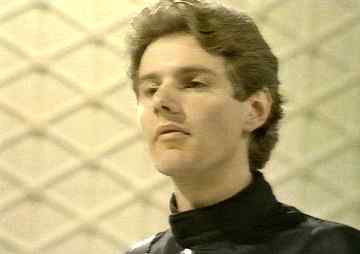 | Aide to Servalan on the space station she used in the episode. She claimed that he and she were "old friends" and questioned him on her staff's reaction to Travis" appointment. He reluctantly admitted that some officers would not serve under Travis or take orders from him. |
| Officer on the London, with the rank of Subcommander and second in command to Leylan. Raiker introduced the prisoners in transit to Cygnus Alpha to their facilities, and tried but failed to take advantage of Jenna. With Leylan's permission, he shot three unarmed prisoners to force Blake to relinquish control of the ship's computer; one of these was shot after Blake surrendered, prompting a reprimand from Leylan. Raiker suggested sending Blake, Jenna and Avon across to the drifting Liberator, and later followed as Jenna attempted to take the ship away. After shooting and wounding Blake, he died when the transfer tube he was standing in was disconnected from the Liberator, pulling him out into open space. | 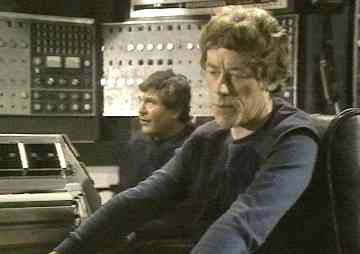 |
| Freedom fighter native to Albian, and the only woman seen to be engaged in the fighting there. Left alone in the control room, she was knocked out but not killed by Provine when he returned to make his way to the escape rocket. She later recognised Provine as the "rebel" assigned to escort Blake. Like Cauder, she declined Blake's offer to leave on Liberator. |  |
The ranks in the series can be divided into three main categories: Federation military, Federation civilian, and other. Before proceeding, the distinction between rank and authority should be emphasised; because those of equal rank can be in different positions of authority. Travis, for example, held the rank of Space Commander, but was given the exclusive and absolute authority to destroy Blake, Servalan requesting that all personnel give the former 'maximum co-operation'.
1. Federation military: The most frequently mentioned ranks in the series, due to the frequency of the encounters the crews of Liberator and Scorpio had with the Federation military. The following suggested system of ranks is based on the military ranks of the United Kingdom of Great Britain and Northern Ireland (hereinafter called the United Kingdom or UK) at the time of the series' appearance; because the ranks in the series seem to be mostly based on ones existing in the Army and Royal Marines, with contributions from the Royal Navy and the Royal Air Force. This contrasts with the system of UFP Starfleet ranks in Star Trek, which appear to be based on those in the United States Navy. The ranks are (in ascending order):
In 'The Harvest of Kairos', it is clear that Captain Jarvik outranked the then Lieutenant Tarrant. Also in that episode, Acting Major Jarvik outranked Captain Shad. From 'Moloch', we know that Section Leader Grose was junior to two pilot captains and a brigade commander. Another named Federation captain is Deral in 'Children of Auron'.
In 'The Harvest of Kairos', Jarvik is made Acting Major, commanding the ships hunting the Liberator. The last is Major Grenlee in 'Rumours of Death', of a senior enough rank to be in charge of Residence 1's security.
(The 'Space' prefix: An explanation for this may be that those who graduated from the Federation Space Academy were awarded the prefix as part of whatever rank they would hold, as a tribute to the skills needed to graduate. (Servalan, in 'Moloch', said that it took a clever man 5 years in the Academy before he even began to 'acquire the basic skills and experience necessary to pilot an advanced star cruiser'.) This was suggested by the fact that senior RAF officers holding ranks equivalent to Army generals, have 'Air' as part of their rank, e.g. Air Marshal.
While those with such a prefix may not have outranked those of equal rank without, the examples of Travis, Provine, and Tarrant suggesting that it was socially acceptable not to use the prefix, except on formal occasions, the former may have looked down on the latter.)
Tynus, in 'Killer', may be a military Commander, although he said that he was a Commander Technician, subordinate to Security. An unnamed Space Commander leads the Federation ships at the beginning of 'Hostage'; and there is a Commander Mori in 'Volcano'. The Battle Fleet Commander in the latter episode may hold the rank of Commander.
Samor, in 'Trial', is Fleet Warden General, which may be either a rank or a position of authority. In 'Rumours of Death', Tarrant said that one of Servalan's presidential titles was 'Lord General of the Six Armies'.
Positions of authority: There are a number of what appear to be positions of authority held by personnel of varying rank. They include: Assault Leader, Base Commander, Battle Commander, Battle Fleet Commander, Brigade Commander, Deputy Commander, FLeet Warden General, Guard Commander, Intelligence Commander, and Security Commander.
Examples of the holders of such positions are many: Base Commander Escon in Seek-Locate-Destroy, who is clearly outranked by Travis, calling him 'sir'; the Security Commander in Project Avalon is a sergeant-major; Major Grenlee in 'Rumours of Death' threatens to put the Guard Commander on a charge; and Intelligence Commander Borr in 'Animals' defers to Servalan, something he would be more unlikely to do if he had the rank of Commander. It is possible that some of the above positions could have been held by civilians.
The confusion that has arisen between ranks and positions of authority is due to the forms of address to the holders of such positions. In direct contrast to the UK military, the latter tend to be addressed by the full or abreviated title of the relevant position, rather than by their rank. For example, Travis calls Base Commander Escon by his title, in the same way as Grenlee calls the Guard Commander.
Tynus may have been a civilian Base Commander, as he describes himself as a Commander Technician, subordinate to Security, which controlled 'all sensitive stores'. Civilian law enforcement bodies were rarely alluded to, but Commissioner and Investigator appear to be ranks within such a body. As a bounty hunter on Gauda Prime, Blake was temporarily appointed as a law enforcement officer, rank unknown.
3. Other: Hunda, in command of the 4th column of freedom fighters on Helotrix in 'Traitor', holds the rank of Star Major; and his second-in-command is a Sergeant Hask. As with the Rebel Alliance in the 'Star Wars' films, such groups presumably gave their members such ranks in order to confer legitimacy upon themselves.
| Referred to by herself as a "bond-slave", she was taken by Coser from the Federation's Weapons Development Base to the unnamed planet on which he hid. She annoyed Coser by continually addressing him as "sir", despite his insisting she didn't. She later seized IMIPAK and marked Servalan with it, allowing Blake to escape. She remained behind on UP-Weapon with Blake's clone. | 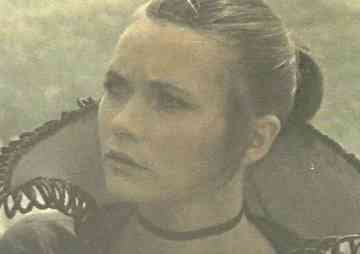 |
Dev Tarrant mentioned ration cuts when he outlined plans to disrupt food production in the dome city on Earth. No further mention was made of food or other rationing, or any indication as to whether or not it was confined to certain planets like Earth or widespread throughout the Federation.
Rashel told Coser that she had overheard a freighter pilot saying that rats were to be found on all the colonised worlds. Rats were seen on the planet, and one was killed in the night by a large predatory creature. Rats were also seen in the dungeon cells on Goth.
In Shadow Vila said that he thought of Orac as "a rat in a box".
| Dissident living in the domed city on Earth who persuaded Blake to venture outside to Foster's meeting by telling him Foster had news of Blake's family. She may or may not have deliberately cultivated her acquaintance with Blake for this purpose. She was seen working with Dal Richie, but what her relationship with him might have been was unspecified. She was one of the dissidents seen to be killed by Federation troopers at the meeting. | 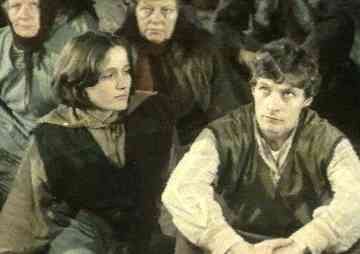 |
One of the features of Dr Plaxton's photonic drive was its ability to propel a vessel at previously unimaginable speeds in "real time". Referred to by Vila and Atlan. No proper explanation given.
A facility of the visual sensors on Scorpio, allowing playback facility at 10,000 frames per second. The space chopper which destroyed three Federation ships was visible on just three of these frames.
Present on the Liberator, and mentioned by Tarrant with a view to putting Orac through it.
Immediately ordered by Servalan once she heard of the alien battle fleet waiting beyond Star One.
|
Aide to Servalan on the planet Terminal. Like Toron and at least two others
there, she appeared to be of a race of tall, slender, blonde humanoids.
Together with Toron she monitored Avon's progress to the underground complex
where Servalan was waiting, and like him was killed by attacking links.
| 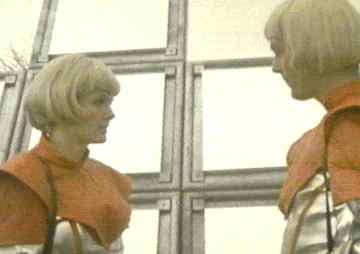 Reeval with Toron |
Federation Investigator accompanied by Commissioner Sleer on the visit to Virn. He used a gun firing bullets so as to avoid the problems the planet induced in circuitry-dependent devices, and wounded Dayna in the arm. He later tried to kill Tarrant, but was befuddled by the sand's mental influence, allowing Tarrant to shoot him.
He contested Sleer's authority and she described him to Tarrant as "an enemy of mine". His conversations with Sleer suggested that the mission to Virn was initially his, and Sleer had had herself seconded to it. Servalan's usual cruiser was not used for this particular mission. Reeve knew that Sleer was really Servalan, and made the mistake of admitting so. The unarmed crewman who accompanied Reeve and Sleer across Virn referred to him simply as a "pig". Further discussion with Sleer implied that Reeve's work involved him torturing suspects.
Chevner made reference to a regeneration plant within the Federation complex on UP-Project Avalon. Exactly what it regenerated was never detailed, but Chevner thought of it immediately after mentioning that the complex's air supply was recycled during the Long Cold.
Blake, in his earlier period of dissidence, launched attacks against Federation "rehabilitation centres" where political criminals were given "indoctrination treatments". It was during this period that he was arrested after shooting Travis.
|
Part of a relay boost was found embedded in the wall of the cypher room on
Centero. Originally connected directly to the cypher machine itself,
discovery of the fragment enabled Prell to realise why Blake had come to
Centero. It was listed as component 1429, with the cypher machine being
component 1430.
| 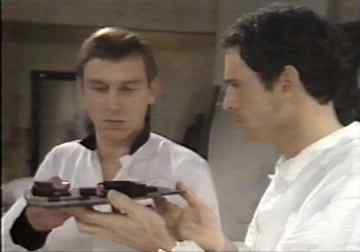 |
Originally an inhabitant of Probus-4, but at some point captured by the Ultra and converted into a menial. Tarrant talked to a recording of Relf's memory traces. The menial Relf was used by the Ultra to capture Tarrant and Dayna: he crushed their bracelets, and later attacked Cally as the crew fled to the docked Liberator. Catalogued by the Ultra as Specimen P7943011.
| The crews of Liberator and Scorpio encountered at least 4 religions, past and present, unknown to late twentieth century Earth, that were shown in some detail, described in some detail, or both. Also in the series were references to religions known to late twentieth century Earth, to religion in general, to the Federation's anti-religious policy, to what could be parts of religions, to words and phrases of religious origin, to religious allegiance, and religious comparisons. | 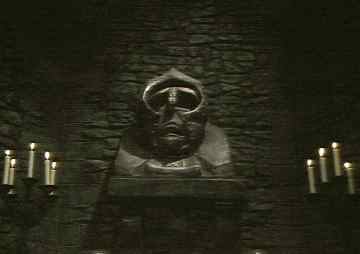
|
The most detailed religion in the series was the one on Cygnus Alpha. The planet's government was a theocratic monarchy, with secular and religious authority being indistinguishable. The ruling class appeared to be a priestly order, headed by Vargas, who called himself 'the supreme power here. My word is law. My followers obey without question'.
His right to rule was because he was directly descended by 'the true and chosen line' from his great-great-grandfather, the founder of the religion, who 'brought them together in the love and fear of God'. (See MONARCHY.)
There were also sacred places, including the Place of the Novices, the Place of Rebirth, and the Place of Sacrifice, a religious doctrine including prayers such as the First Law (See FIRST LAW.), chanting, and ceremonial robes (Vargas's being purple and Kara's burgundy). Torture, execution, or both appeared to be the fate of those regarded as unbelievers, and its rituals also included human sacrifice.
Vargas wanted the Liberator so that he could spread the religion to other worlds, and was prepared to torture Blake and sacrifice at least one of the London's prisoners to do so.
i. In Deliverance, the Liberator's crew discovered a religion, possibly polytheistic - although it could have been a form of ancestor worship - on Cephlon. Meegat, the latest incumbent in the office of 'the one who waits' for a messianic saviour of her people, acknowledged Avon as such, calling him 'Lord'. She explained to Avon, Gan, and Vila a prophecy that 'strangers not of this world would be the means of our deliverance'. She later spoke of the 'legend of deliverance':
Our fathers fought a great war, and Kashell the Wise dreamed all life would end in this place....So Kashell sought a way to preserve our race. A way for it to survive in a new place among the stars. And the way was found....Deliverance was prepared. And Kashell the Wise was satisfied that it was good....All that was needed to complete deliverance was the word of Kashell. But our fathers killed him, and the word was forgotten. And so we wait for the nameless Lord whose name shall be spoken by the one who waits. Meegat speaks his name. His name is Avon.
'Deliverance' was a chemical rocket in launch position, carrying a cargo of fertility cells. Avon, with Vila and Gan, was able to launch the rocket, fulfilling the prophecy, despite all being uncomfortable with how they were regarded.
Gan and Avon both referred to themselves and Vila as 'gods', indicating that they regarded the religion as possibly polytheistic (if indeed they thought about it to any extent); and this assumption may be correct as Jenna later asked Avon if Meegat really thought that he was 'a god', and received the reply, 'For a while'.
ii. In Dawn of the Gods, the Liberator's crew encountered a being called the Thaarn. (See THAARN.) While Cally said that he was 'as mythical to me as dragons and unicorns are to the people of Earth', and that he 'never existed outside children's stories and legends', she told of 'the oldest story in the Book of Auron'. (See BOOK OF AURON.)
Seven gods, according to her, discovered Auron and left there the first man and woman. They came back after a million years but were 'no older', were 'pleased with what they saw' and bestowed 'great gifts'. One of the gods was 'very jealous', not believing that the people of Auron deserved all this; he was frightened that they would become so powerful that 'they would challenge the supremacy of the gods themselves' and in his rage killed another god. The five remaining gods were so angry that they built 'a chariot for him and sent him beyond the threshold of space and time'.
The 'mad god' swore 'a terrible vengeance', saying that he would return again and discover 'the eternal secrets' and become 'the one great master of the universe'. Cally ended by repeating that the story was 'a legend', and that on Auron the name of the Thaarn was a 'symbol for darkness and evil'.
It is possible that a polytheistic religion was once practised on Auron, but ceased to be so before Cally's time. Perhaps there was an official policy to inculcate in the Auronar that such a faith had been a complete myth, with no basis in fact. Cally's dismissal of the story may have been the product of such a policy. If so, it was ironic that her refusal to admit to a factual basis of that faith appeared itself to have the characteristics of a faith.
iii. The religion shown on Mecron 2 in Games was an important factor in what was seen to happen on the planet. According to Belkov, the Mecronians took their religion 'rather seriously'. Later he spoke of ritual murder being one of their 'rather nasty habits'.
According to him, the Mecronian high priests used necklaces of Feldon crystals as the symbol of their power, using the death of a chief who stole a necklace as evidence that the gods had been angry and struck him down. Belkov, realising that it was an electrical storm, used this legend to 'convince' the people that their gods had sent him to take the crystals, using a remote controlled laser rifle to shoot all, save him, who tried to wear a necklace.
The Mecronians appeared to have a number of sacred places. Belkov deliberately sent Servalan and her men to one such place, saying that the _Scorpio's_ crew were there, ensuring that she would have a fight on her hands. When they went in, there were sounds of chanting and a figure holding up a knife in what was presumably a religious ceremony of some kind.
The fact that the fake Feldon necklace and the knives used by the Mecronians were all in the shape of an equilateral triangle, plus the reference to ritual murder, suggests that the shape may have been a religious symbol.
It was possible that the Federation tolerated its citizens using words and phrases of religious origin, something seen in the series, on the grounds that such words and phrases were sufficiently detached from this origin.
While there were descriptions of and references to religion in the series, it was told from the point of view of the main characters, who were not 'religious' in terms of any declarations of religious allegiance, including stating that they tried to model their outlook and behaviour on the teachings of a religion, or engaging in any acts of worship. Most were either Federation or ex-Federation, and the reference to that state's anti-religious policy might indicate that the passage of time, coupled with this policy, appeared to have produced, even among those who would regard the regime as an enemy, many irreligious people. Gan, in Pressure Point, had to be told by Blake what a church was.
Presumably, those who wanted to have a career in the Federation had to conform, at least outwardly, to this policy, whether sincerely or not. On whether there were underground religions in the Federation, perhaps looking to those based outside that state, no information was given.
The device used by Wallace and Teague to open the hatchway on the outer hull of the Liberator. It was fitted with at least three "circuits", the third of which caused the hatch to open.
| Remote-controlled cameras, hovering some distance above the ground and used for recording and televising events. They could be directed by spoken commands. "Remote" was probably viscast production crew jargon. | 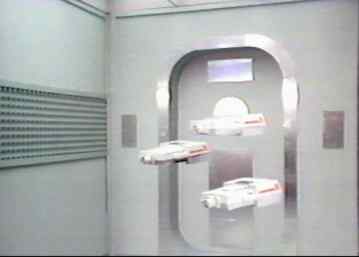 |
Visual projection device on the flight deck of the Liberator. It appeared to deliver a holographic image from a tall conical projector.
| A surgeon based on research station XK-72, Dr Renor teleported across to Liberator to assist Professor Kayn in repairing Gan's limiter. He was prepared to try and operate on Gan unassisted when Kayn sat back and waited for the Federation to arrive. He presumably died when a salvo of plasma bolts missed Liberator and destroyed the station. | 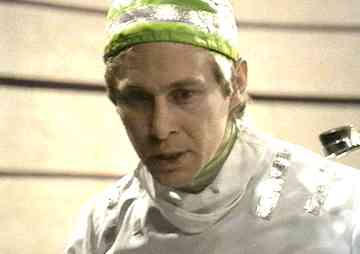 |
The cloning centre on Auron, apparently under the control of Franton. The only other member of staff mentioned was Cally's twin, Zelda. Avon, Tarrant and Cally took temporary refuge in the replication plant when Servalan started bombarding the city - the presence of Servalan's clones meant that no projectiles were fired on the plant. Together with Franton and gene stocks for 5000 offspring, the crew teleported out before Ginka persuaded Servalan to let him open fire on the plant. The replication plant was then destroyed, along with Zelda.
Also known as the bioreplication plant.
| Servalan's palace on Earth, as called by Major Grenlee, and a perfect reconstruction of a pre-atomic mansion. Tarrant suggested that the cellars might have been part of an original period building. Sula called the residence a "grotesque anachronism" and said that two cities could have been built with the money spent on constructing it. | 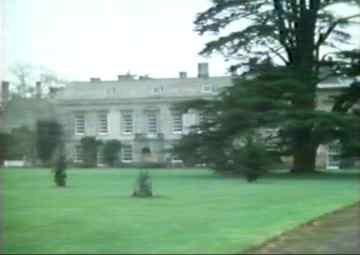 |
The Kommissar described Blake and Jenna as "resisters", ascribing their "condition" to a malfunction of the genes. He believed that only one person in ten thousand was a resister, most being detected in infancy.
|
Respirators were worn by Avon and Vila in The Harvest of Kairos, when
they went down on the permanant dark side of an unnamed planet and
collected Sopron. The type of respirator used was black and consisted of a
mask covering the nose and mouth, linked by two tubes with the respirator
proper, which was contained in a small box attached by straps to the
wearer's chest. The use of the respirators presumed that conditions on the planet's surface were such that the atmosphere was unbreathable, though with tolerable pressure. | 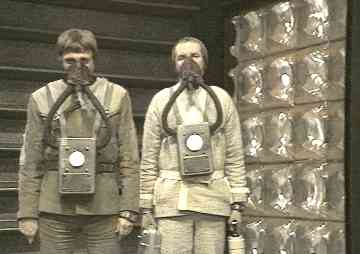 |
Vila briefly extolled the more appealing (to him) features of Federation rest centres, including sensory ecstasy hours and pleasure machines.
|
Cally was placed in a resuscitation capsule in Liberator's surgical
unit after she collapsed when contacted by the Thaarn. See also MEDICAL UNIT.
| 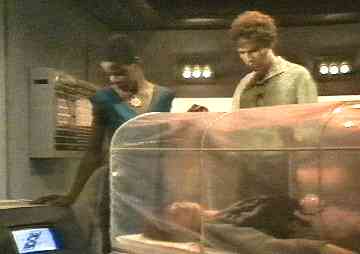 |
After his failure to kill Blake on Aristo, Travis was apparently despatched to a retraining therapist. No further meaningful information was given: even Travis himself merely said, "My visits to the retraining therapist have left me... I don't know".
Mentioned by Leylan to Artix on descending to Cygnus Alpha: "check main retrodrive".
Blake found a heavily rusted six-shooter in the church on Cygnus Alpha. No mention was made of who had brought it to the planet or when. Sarkoff pointed an unloaded revolver at Blake in his residence. Deeta Tarrant and Vinni were issued with revolvers for their duel.
| Dissident in the domed city on Earth, who unlocked the access door to the outside when he, Blake and Ravella travelled to Foster's illegal meeting. He was killed by troopers at the meeting. Ravella introduced him to Blake, so they had presumably not met before, except possibly during Blake's earlier dissident period four years previously. |  |
Insalubrious area of Freedom City, not far from the docking cradles. Chenie's bar was here, and she told Blake that she was in a position to see everyone who came to Freedom City. Travis and Docholli stayed on the Rink, according to Toise.
|
Nominal ruler of Horizon on behalf of the Federation. Trained at the CEC,
where the Kommissar described him as "quite malleable", he was initially
reluctant to face the fact that he was a puppet ruler when he questioned
Blake, but eventually realised the truth. His father, Movo, had been killed
by the Kommissar, and Ro was telepathically informed of this by Cally. He
was engaged to Selma, but had her sent to the mines for refusing to take
Federation training herself. She was later released on his order. He
finally appeared in tribal costume to kill the Kommissar with a poison dart
from a blowpipe, and came to rule Horizon in his own right.
| 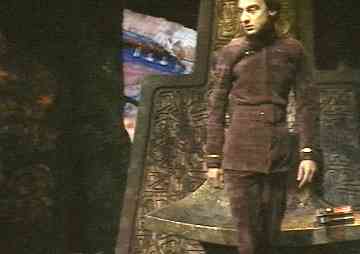 |
|
Federation security robots, armed with flamethrowers, were seen patrolling
the Federation complex on Centero and the tunnels beneath the surface of
UP-Project Avalon. Orac guided Blake and Cally through the force
barrier on Aristo via a spherical flying robotic device.
Blake, in Voice from the Past, referred to robotic maintenance on
Asteroid P-K118 as 'standard'; and Avon later said that the former had been
summoned there, 'whistled' up, 'like a service robot'.
| 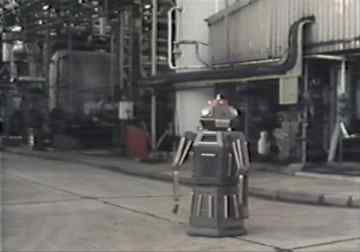 |
Organisation on the planet Pharos, employing the genius Muller. It was never made clear whether Pharos or the Cartel were within the Federation or not: the word "cartel" suggests a consortium of independent companies rather than a state department, and the term is almost certainly a purely descriptive one rather than a proper name. Visited by Tarrant when he teleported down to pick up Muller. Either Pharos or the cartel itself could deploy interceptors against potential hostilities, since Vila detected "a flock" of them launched as Tarrant prepared to teleport up from the planet.
The duty tracer on Helotrix detected Scorpio during a routine line scan and deduced that it had to be a space craft because it was "above Roche's limit".
The Roche limit is a multiple of the radius from its centre. For Earth it is 2.44, but varies elsewhere with planetary density. Should a fluid body such as a moon approach within this distance it fragments under the influence of the planet's gravitational field. Artificial satellites are unaffected, being held together by their structural cohesion. This is somewhat at odds with the duty tracer's comments (if only because Slave stated an orbital altitude of just 40 miles, giving Helotrix an improbably small radius - perhaps 20 miles or less), and is probably an error - not impossibly deliberate - by Robert Holmes.
Any vehicle propelled by a rocket engine or motor, the latter being a reaction engine in which a fuel and oxidizer are burnt in a combustion chamber, the product expending through a nozzle, producing thrust. There were five rockets mentioned or shown in the series. In Space Fall, Avon mentioned to Blake that the Liberator's 'Life rocket launch control' had been operated, explaining what had happened to the crew.
In Mission to Destiny, Sara launched Life Rocket Two from the Ortega to make people believe that Dortmunn had left the ship, therefore had killed Raffort and had damaged the main controls on the flight deck. Mandrian said that the life rockets had a 'limited range'; the one launched couldn't carry Dortmunn to a habitable planet.
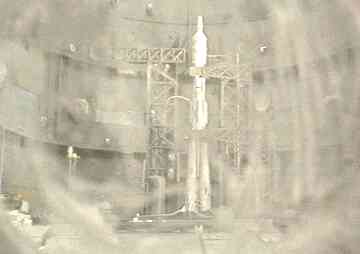 |
In Deliverance, a 'chemical rocket in launch position' was seen,
later launched by Avon on a journey that would take it 500 years. In
'Countdown', a rocket was shown on Albian, in what was variously described
as a 'rocket silo' or 'rocket launch pad'. The rocket was described by Avon
as 'fast but short-range', with a life-support capacity of about 100 space
hours. It was intended that Provine, Selson, and Tronos would get into
orbit in the rocket, staying there until the decay of the radiation from
the detonated solium radiation device.
|
The life rockets referred to appear, from their function as emergency escape devices from a ship, to be life capsules under another name. Apart from the chemical rocket in Deliverance and the one shown in Killer, no indication was given if the vehicles mentioned or shown were powered by rocket engines or motors equivalent to those of twentieth century Earth.
See also LIFE CAPSULES.
A rocket silo on Albian, at the junction of corridors 11A and 51B, contained a short-range space craft with life support capability for 100 space hours.
Gola's brother, who conspired with him to imprison their father and take the throne. Gola made himself Charl and exiled Rod. Captured by Gola's men, Rod was rescued by Blake and they worked together. Rod was later defeated by Gola in single combat.
Quoted by Egrorian: "O liberty, liberty, what crimes are committed in your name!" She allegedly said this on passing the statue of Liberty in 1793, on her way to be executed as another victim of the French Revolution.
| Described in Seek-Locate-Destroy as Secretary Rontane and personal representative of the President. Rontane, together with Bercol, visited Servalan in her space station to express the President's disapproval of Blake's continued freedom and his growing popularity with dissidents. Rontane later appeared, again with Bercol, as an observer at Travis" court-martial. He probably died as a result of Blake's surprise attack on the HQ station as sentence was being passed on Travis. | 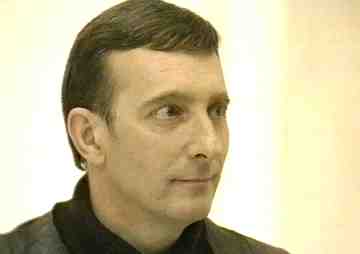 In Trial |
| Component of the sub-etheric transmitter on Albian which could activate the solium radiation device. Vetnor attempted to isolate the rotornoid link, but merely delayed the countdown for a few seconds. | 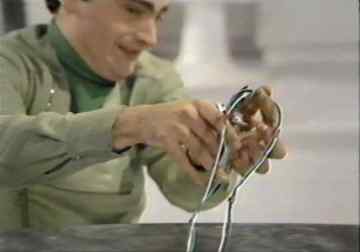 |
Fundamental principle of the Clonemasters" philosophy, described to Servalan by Clonemaster Fen. Based on the principle that "All life is linked", it forbade the Clonemasters to create new forms of life, only to copy those that already existed. The Clonemasters" city was made of a vegetable material, alive and responsive to mood: this was presumably a pre-existing species so as not to violate the Rule of Life.